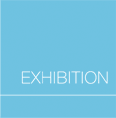|
Cloth & Culture NOW
the artists - Kristiina Wiherheimo, Finland
The influence of Finnish culture on my
work largely stems from our peasant culture and the simplified
mode of expression of post-war industrial art. When I was studying
at what is now the University of Art and Design Helsinki at the
turn of the 60s and 70s, our teachers were the designers and
artists of the generation that itself worked as designers in
the 40s, 50s and 60s, and which in tandem with the industry itself
brought about a flourishing of the Finnish industrial arts. Our
teachers on the foundation course included Kaj Franck (a designer
at the Arabia ceramics factory and Nuutajärvi glass factory, and Director of the University
of Art and Design), who taught us what was known as ‘general
composition’. This subject formed the basis for all the work
we did on form, colour and composition, for the search for simple,
functional beauty, for identifying what was essential, and for
achieving clarity of content.
I think this has had a powerful influence, especially on the final
polish of the form of my works. The themes come into them from
elsewhere, and are mostly records of transient phenomena and illusions,
there to allow me to recall to mind what I see, so as to allow
me, by explaining it in very simple terms, to show other people
what I see, experience and think.
The influence of other cultures has perhaps come more from painting
and architecture. The impressionists, expressionists, abstract
art, the constructivists and colourists have been significant.
Their influence has perhaps been most evident in the freeform composition
and use of colour, in which I have also been encouraged by the
bright colours of Indian and African textiles. I have also admired
Japanese kimono culture, their asymmetric, freeform composition
has fascinated me, as much as the non-uniform patterns permitted
by the Finnish rya-rug technique. Somehow I have always found hidebound
techniques oppressive. I have also begun to be interested in the
way old paintings handle light and composition, and in their skilfully
painted textiles. In the old paintings by the Italian masters cloth
can serve solely as a compositional element in an otherwise bare
space or landscape, in which case it takes on its own distinct
role. This has perhaps played a role, for instance, in my pastel
works, which on completion, and to my own surprise, have turned
out to be fabrics. The same could be said of the iron curtain on
the main stage at the Finnish National Opera, which seen from a
distance looks like it has a soft surface, even if it is actually
painted steel.
Modern architecture has an important place in my work. I have
always taken a practical approach to everything I do, I have generally
not made works solely out of a burning desire to make them for
the storeroom. I have been motivated by the knowledge that the
work is needed for a specific space and purpose. I have been inspired
by a specific framework, even though, for example, I have otherwise
been able to choose the content of the commissioned works freely.
It is crucial that the whole thing works together with regard to
the space and the requirements. I prepare for my forthcoming works
in advance by continually testing out materials, techniques, colours
and lighting.
Not a single example springs to mind in
which I have been able to detect the explicit influence of Finnish
textile art in the textile art of other countries, but then,
on the other hand, I haven’t consciously studied the matter. Nevertheless, I don’t
see it as impossible that this might be the case, we live in constant
mutual interaction. Previously, movements used to be slower, and
nowadays trends whiz by at an almost unnerving rate in art, too.
The beauty of cloth, the feel of the material
and the surface, and the calm quality of a simple weave are basic
matters that derive from traditional textiles. They have helped
me to find the right material and technique, even though I don’t
come anywhere near to always using thread or fibre as my material.
The warp, weft and weave form a universal structure that is also
significant in terms of the expression, when you are seeking
to create both concrete and symbolic form. The cloth itself is
inspiring. The sound of it, the reflections of the light and
shadows on it's surface – the folds, weaves, colors and
figures are always in my focus, as well as the drama and mysteriousness
of a curtain. How can an innocent piece of cloth in front of
the face shake the whole world.
Artists employ influences unconsciously. Of course, everything
they see and experience has its own significance. After all, nobody
can draw sustenance from a vacuum. What I am writing now is an
analysis of my own work, seen via the questions that I have been
asked.
Helsinki 29.11.2006
FINLAND
|









